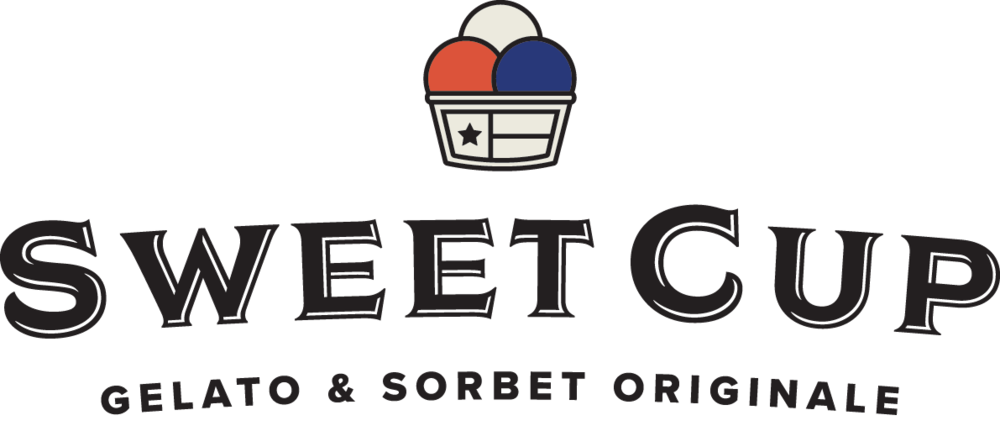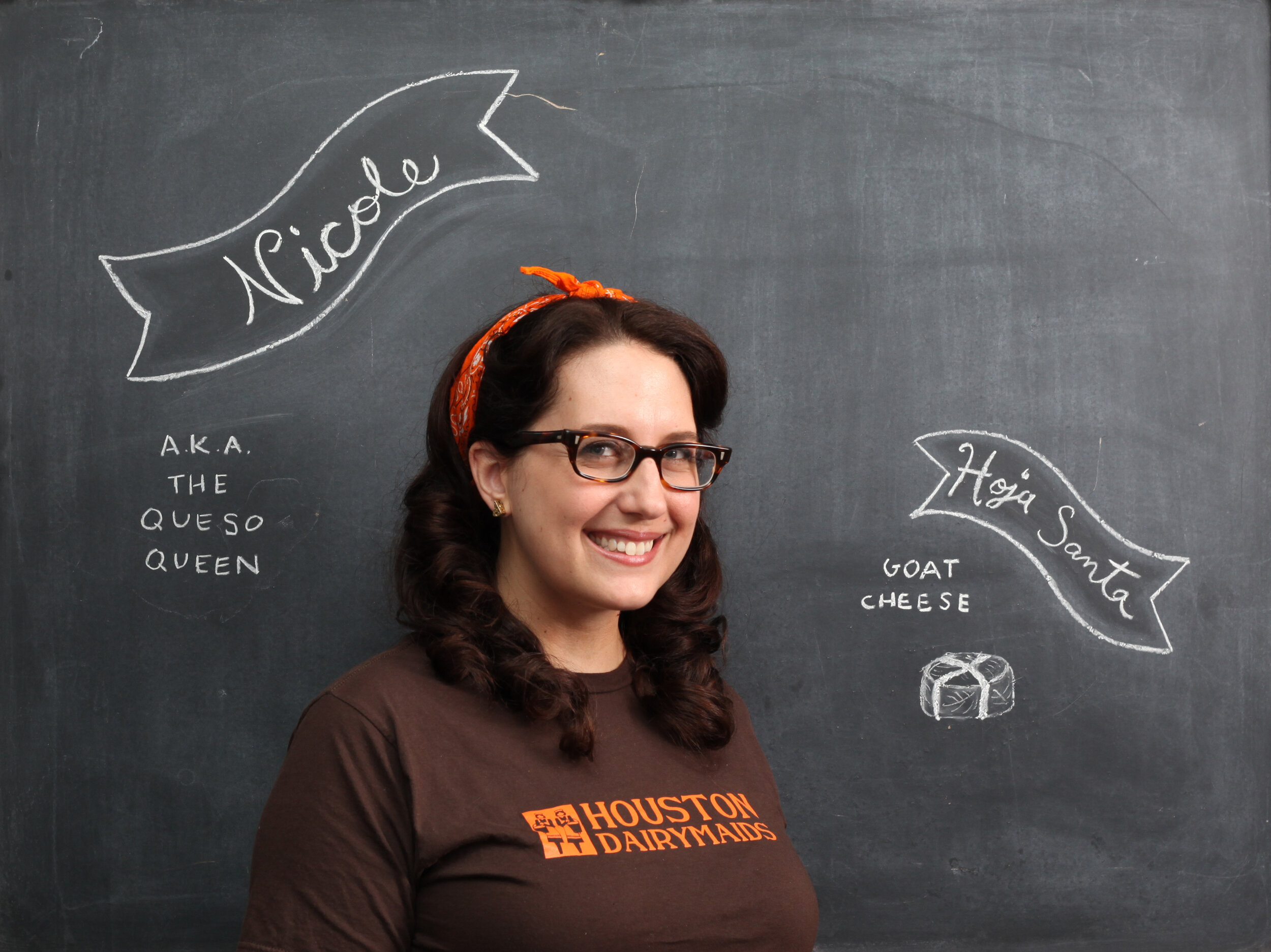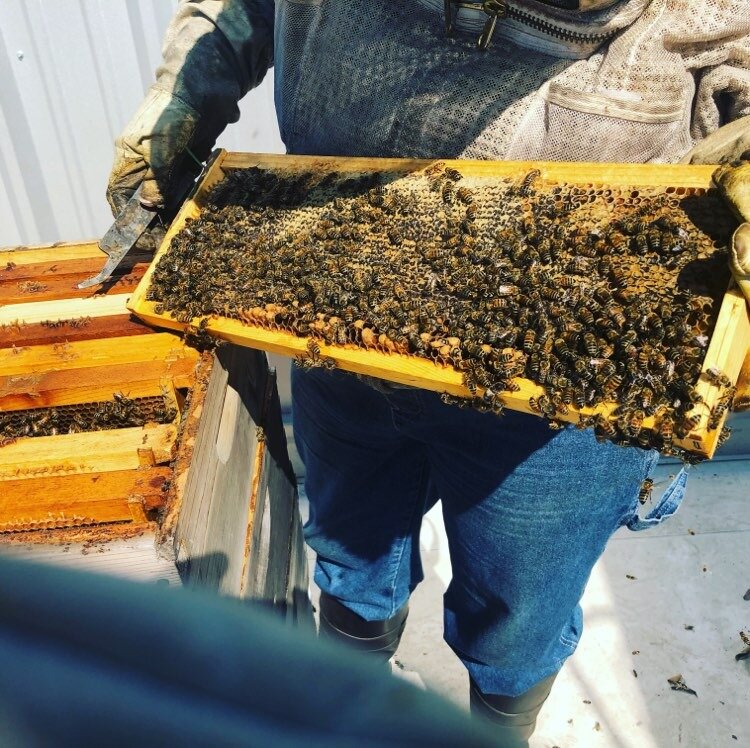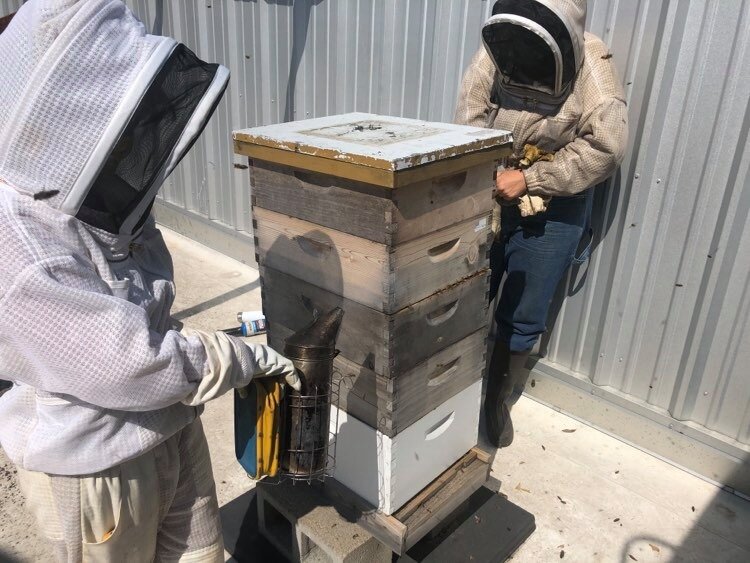An Interview & Spotlight – Bee2Bee Honey Collective
By Colin James Sturdevant
For years, Jasmine and I have been wanting to feature the vendors, companies, artisans, and farmers we work with and rely on for ingredients in our gelatos, custards, yogurts, and sorbets. Time is short. Time is limited. And that being said - our blog section was placed on the backburner for years. But this year we plan on featuring the artisans and craftsmanship of our locally sourced products. Our first feature is Nicole Buergers and her enterprise Bee2Bee Honey Collective. We’ve been using Bee2Bee’s honey for years now; I remember a jar sitting on the kitchen table with a light amber, golden hue. I’m always curious as to what Jasmine’s up to, and she told me it was a locally sourced honey from our very own city.
Honey. A substance I’ve hated since childhood. All of my family members loved it but to me it always tasted like plastic (Nicole told us how packaging can influence the flavor). It’s never tasted good to me since I can remember, and I am in my early 30s. Jasmine suggested I try it. And I did. I dipped a spoon into the jarred body of amber. This is gonna be awful, I thought to myself. As the now gold in shallow volume honey dripped off the spoon, I raised it towards my mouth. I’m sure my lips curled in fear. As the spoon carried the honey into my mouth and the gooeyness hit my tongue, an aura of blinding light enshrouded me and a chorus of angels could be heard. IT WAS AMAZING! Okay, maybe I exaggerated a little-or a lot, but one thing remains the same: THE. HONEY. WAS. AMAZING. And I’ve tried fancier, and more costly, honeys from different companies and vendors and always found it to be lackluster. But this honey was different. In fact, from my interview with Nicole, I was probably experiencing REAL honey for the first time.
This stuff changed my perception about honey. I remember the roller coaster of an experience it offered – the honey was sweet, sometimes had heat, and there are these floral and other plant notes that are unique per each honey. In fact, what I may have had growing up, as well as some of you, was eating something that really wasn’t honey. (We’ll get more into this later.) What I’ve always thought was a plastic, bitter tasting syrup was an adventure in a spoonful. The honey I tried was the Guajillo Honey. Now, many folks raise eyebrows at “Guajillo” (soon to be re-labeled “huajillo”) because there is a pepper with the same name. And we assure people that there is no bit of hot chilis waiting to surprise them. It’s called Guajillo because the nectar and pollen food source comes from a type of bloom and plant that has that distinction. I learned a lot from Nicole about bees and beekeeping. Of course, honey too. Although a Guajillo plant provides nutrition for the bees; bees themselves will travel up to three miles from their hive or apiary for nectar and pollen.
In college, I was required to take a minor for my degree, so I did one in Anthropology with a focus in food & alcohol. I was fortunate enough to grow up in an upper middleclass lifestyle to where I was able to have an array of socially and culturally different cuisines. And not just an array or linear spectrum. Our family was able to partake in a few upscale meals each year. And my food interests were limited as a kid – which to this day I believe is an exaggeration on my mother’s behalf – where there were only three food groups for me growing up: steak, potatoes, and ice cream. I swear with my hand raised to my heart, I ate more than just that. But as I aged, my tastes changed. I will now eat things even my mother won’t eat. The most interesting things I’ve eaten in prepared dishes or some form of food have been: turtle, ants, alligator, yak, camel, and crickets. Offal, too, which has lost itself off the map of the WASP urban American kitchen table. But from my college courses on beer, wine, and liquor as well as global cuisines and the origin of the cooked meal, I’ve learned things that when reiterated and shared, people look at me like I am nuts. What makes people look at me as if I’m nuts? Say it with me: TERROIR (TARE-WUAR). I learned about the true meaning of staples, cuisines, terroir, the crassness and rudeness of the term ‘authentic’, select & limited versus commodity, and more from one of my favorite professors at the University of Houston, Dr. Widmer, of the College of Anthropology.
Nicole came in one day and I was raving about her honey. I told her I hated honey. That to me, it tasted disgusting. I told her I would buy some from her as soon as I could, but like many things I’d like to support and do, it escaped me or I had focused my income on other means. I told her that I tried the honey from Garden Oaks and the Guajillo honey and that both had very distinct tastes. Was that what I wanted to say? No. The “T” word tried to squeeze out of my voice box, but couldn’t make its way up my throat due to being feared seen as a fool. I’d always expressed to people at the shop that we do certain flavors during certain parts of the year because of what’s “in season” due to “terroir”. I’d explain the concept to customers and receive blank stairs or mouths and eyebrows that dismissed the possibility and all that entails of terroir. And then it popped or more rang like a familiar tune when she mentioned “terroir”. Hallelujah, I thought. I felt like someone speaking a language in a country where it wasn’t vastly spoken, that I was lost in translation and lost in a place that wasn’t familiar. I was so excited that someone else in the food world understood, lived, and loved the concept!
Now, for some of you that haven’t heard of terroir, it is normally reserved, or was more reserved, in reference to wines and varietals grown in vineyards around the globe. But people, more at persons, in food and drink across history realized it was prominent in everything we eat. Whether you drink a glass of spring water, milk, wine – anything drinkable under our sky and sun – has terroir. Everything you eat has the same concept. Terroir, in my own words, is a French view and belief (as well as theory) that all environmental stimuli in agriculture affects the flavor and textures of food and drink. As for wine, that is dependent on soil composition, seasonal rainfall, amount of sunlight, wind direction, elevation, and more. Said could be same for all plant-based agriculture. But even so for animals, especially with diet. Think of it in terms of milk and beef. Milk is said to have two different flavors because the fall/ winter and spring/ summer climate and diet. Grass fed and finished versus corn and grains. There is a difference in texture, appearance, and taste. Think of eggs for that matter. Chickens that eat grass and feed and free-range prey - have a different taste and appearance. Even the shell’s strength has a difference. And don’t get me confused with “uncaged” and “pasture raised” that hardly hold true to those claims or concepts. I mean a sizable flock that gets feed, grass, and tons of open field to forage. You could say the same for live, sustainably caught oysters and mussels. Environment impacts the food. Not on just a simple scale, but for specialty, handcrafted goods such as pasta, cheese, beer, chocolates, and gelato! That’s terroir, baby. It’s the bee’s knees.
Years ago, we wanted to check out how Nicole takes care of and extracts product from the hives, more so apiaries, and like this blog project, and other things in life, it was left on the backburner. This past summer in August, we finally got a chance to go see Nicole in action. This trip would be two separate parts: field work and then research. I wanted to see the process of bee handling, extraction, and more. I even was curious as to how Nicole got into the business of bee keeping collective.
It was a warm August morning when I groggily, and without my daily coffee, headed to one of the several apiary locations that Nicole tends to. The one I visited that day was located at the Houston Center for Contemporary Craft. I thought the weather outside was just right. Not too hot. Slightly humid. But I would be wearing a suit for visiting an apiary on the rooftop. Who knew I would have a blast to the past of what it feels like to wear a mascot outfit again? Yes. As I tried to get my gourmand body in a suit, it all came back to me – memories of myself as a portly middle schooler at a private school who was begged to don the Clifford The Big Red Dog suit for the bookfair. Like then, I did it for the team. And I did it for exploration and experience for the self.
It took three different tries to get a suit that would zip up around my big, bodacious body. In fact, I think Nicole had to make a quick run back to get a bigger suit. They all smelled campy, but in a good way. The scent was smoky and sweet. Third or fourth fitting was the charm! I was totally decked to hang around bees. One could say I looked like a giant grub or an albino sausage link.
Once we were all ready and equipped, we went inside the art museum and took a quick right upon entering. We went up a ladder to the rooftop. And I was quivering as I scaled the steps. Not in fear of the bees but the fact I hate climbing a ladder. As soon as we were up on the roof, there among the white backdrop of the rooftop was a stack of several box-like and wood paneled formations housing the beehive. Nicole had a tool called a smoker that released smoke to allow us to get inside the hive and to take it apart..
That same scent that clung to the suit bloomed out in a stream of smoke from Nicole’s tool. As Nicole and her employee lifted the stacked compartments, bees literally dripped and fell in masses – softly and humbly. And once they’d hit a surface, they’d start to separate, some taking to the air. It was beautiful. Almost like ballet. Or soft flecks of falling snow. Bees started to hover around us, the apiary, and several feet out.
As each separate component was pulled, Nicole and her assistant pulled out these frames that contained the honeycomb structures where the bees did their magic. They slowly and delicately brushed over the bees in hopes to find the queen. I thought we were looking for the queen to check the health of the apiary. Nicole and her assistant gracefully looked through each wall of honeycomb. Backtracking and rescanning just in case. But we weren’t able to find the queen. I thought the queen would’ve been easier to find, and Nicole told me searching for the queen is like looking for a needle in a haystack. The day moved forward as the apiary was searched, the sun bearing down more as each fraction of an hour passed. Soon it would be noon, and we then broke from our mission as several variables were missing. Nicole and her assistant then put the apiary back together again, cautiously and carefully. We returned back down to the first floor happily removing some of the bee suits to get some cool air. After that, Nicole and I would meet on a different day at her production facility so I could conduct an interview.
~ ~ ~
Weeks later, I drove to a multiple story brick house not far from our shop. I rang the bell with anticipation to see the operations of Nicole’s Bee2Bee honey production. Nicole welcomed me in and showed me around. The first room I entered had shelves of honey ready to be sold at market or online. There were several types of honey either from certain neighborhoods and areas of Houston or some were infused or relied on certain plant sources: Orange Blossom, Meyerland, Kashmere Gardens, Seabrook, Lavender Honey, Creamed Cinnamon, Westbury, and several others. They also had a separate room where they extract the honey done with this stout, cylindrical metal vat which reminded me of a miniature water tower called a honey extractor.
I had a lot of presumptions on Nicole’s expedition of being in a business that works with bees, others around the city, and creating a superb product. I had all these preconceived ideas that made me feel like a true luddite when I received a media package with information about how her career started and grew. And I’ve ordered a few times from her website, and I’m sure that same information is on the website. If my English professors knew this, they’d be ashamed at how unprepared I was.
The preconceptions I had of Nicole and her business was like this: she must’ve been a biology student with an emphasis on bees or she had gone through an agricultural program. How naïve of me. It turns out that her story was similar to Jasmine’s. As Nicole told her story; I felt ashamed of my ignorance. But that’s part of learning.
. She was interested in beekeeping and had researched it for a whole ten years and taken classes. One day she was given an apiary by her boyfriend on her 33rd birthday in 2013, and in the spring of 2014; she began the practice in her backyard.
Before Nicole settled into her beekeeping and Bee2Bees mission, she had many jobs - a Jill of All Trades. She’s always juggled more than one job - a job to pay the bills and a side hustle. Before she became the queen of bees, she was the queen of the side hustle. The side hustle was always a passion of hers. The latter of her jobs was in Houston where she had worked in B2B (business to business) internet marketing as a SEO (Search Engine Optimization specialist) and eventually she was promoted to a managerial position. She would find herself looking out the window thinking of working with bees. She started to divorce herself from her job and started to find it boring and unfulfilling. Honey wasn’t the only passion. Cheese was, too. In fact, she wanted to be a cheesemonger and work with The Houston Dairymaids since they are all about terroir and sourcing local cheeses. Even before then she had a blog about cheese, and in the mission statement of the cheese blog she declared that one day she would be a beekeeper and work with honey.
Houston offered so much for beekeeping and honey: diverse flora, tons of green space, a better climate. She worked for Houston Dairymaids, and still does, part-time while working an internet marketing job.
Now, Nicole runs a mentoring program for residential clients as well as beekeeping management for businesses and non-profits. There are many problems honeybees face and there are many issues with giant agra business practices. Some of the issues that bees face are climate change, loss of habitat, pesticides, disease, and more. Although Nicole can’t change how the industrial complex does things, she can help by changing the way hobbyist beekeepers beekeep and how they learn. A lot of the education for hobbyists come from commercial farms but it doesn’t work for someone that only has a few hives versus thousands of hives a commercial beekeeping operation has. Bee2Bee uses beecentric practices. Nicole educates hobbyist beekeepers and the general public about bees, gardening, and honey. It’s educational. Bee2Bee gets 35 percent of the backyard harvest of the urban beekeepers’ honey, and the money made from that goes into the business and helps Nicole and her company to continue its mission. Only surplus honey the hive does not need is taken. And as said before, Bee2Bee has grown, and they’ve been growing due to the fact that restaurants and specialty shops and bars that buy the hyperlocal, urban honey. The awesome thing about also working with honey is that it never goes bad. It has the longest shelf life of any ingredient.
She also realized there was a demand and market for local - Houston - honey. Customers would always inquire about the honey sold at Houston Dairymaids, and when they were disappointed to find out it wasn’t from Houston, they wouldn’t buy it. That was also an influence to start Bee2Bee to offer local, urban honey. Now, The Houston Dairymaids has a plethora of hyperlocal honey for sale - even honey from their backyard.
Bee2Bee seemed like it would just be a side job but became full time. She really wanted to do it as a side job where she could educate people on urban beekeeping. She was used to working more than one job at a time and does even so now. I was interested how becoming active in her new pursuit had changed her, and wondered what joys and fears it inspired. It’s not just letting bees do their amazing thing in your yard. There’s more to it. There’s heartache and loss. You’ve got to have grit, true grit. There’s the chance you lose hives. It’s not all bright, sunny, happy, and fun. You’re going to get hot and sticky. It requires a ton of physical labor. Prepare to get in the trenches, if you want to be a beekeeper. You’ve got to be able to pull your strength together and to charge forward after disheartening failure. Nicole highlighted a surprising fact: 80 percent of beekeepers quit in their first year after going through the hardships of the trade and craft of beekeeping.
I wanted to know more about these winged six-legged, striped flying organisms. I wanted to become one with the honey. There were a myriad of questions I had, and most were answered. Look, I wanted to share the myriad of facts about bees and beekeeping with the masses, but the intricacies of those facts would take so much time and space to explain. If you want to learn more about bees and their application in the agricultural complex, then pop some popcorn, grab a bevy, put on those PBS stunner shades, tune into Netflix and watch the documentary Rotten.
Oh, we are getting to the heart of this blog article! Oh, I love Bee2Bee and its honey. It truly opened my eyes to how amazing honey can be! And it can be the same for you, too, dear reader! The honey Nicole makes is raw honey. Raw honey is bliss, and there’s a pretty significant reason for that. A majority of honeys in the grocery store and the marketplace aren’t even honey anymore. They’ve been stripped of what makes them honey. It turns out that 80 percent of what’s being sold as honey is not honey at all, but more like a syrup that’s been processed. How does this happen? Well, the honey in the majority of the market is heated, filtered, and then stripped of all pollen. How can you tell if the honey you’ve been getting is the real deal? It’s pretty simple. Real honey will start to crystalize over time, and the other stripped and processed stuff is always gooey and liquid like. Did your draw drop just then? Mine did too at the interview. I wanted to also know what Nicole wants her clients and customers to experience when it comes to eating honey. She really hopes for people to support and experience local, and to get a sense of how flowers in nature influence the terroir of the hyperlocal honey her company produces. It really is different between the different locations the honey ends up coming from. I have about six jars of different sourced honeys and their sweetness is different, have tasting notes that are different, and there’s always this floral note but they all are so unique.
The 80 percent of honeys that were mentioned previously that were stripped of all of what makes them healthy and unique is done so that it meets consumer demands. People expect a certain taste and color, as well as texture, so the animal by-product becomes a by-product of itself after processing. Bee2Bee is also probably one of the more expensive honeys in the local market place, but this is where we separate commodity versus specialization and artisanship. Like all products on the market, they all have costs. You have rent for your workspace, labor costs to pay hired help (and hopefully yourself), utilities, resource costs (a business may have loans on the equipment they use, packaging costs, and more!), a variety of taxes to pay, and so many other cost factors. A commodity is a product in the marketplace that normally is at a low cost point, greatly available for public consumption. and is cheaper which can correlate with a different standard of quality. When you have a product that isn’t a commodity and usually comes from a small business, there are higher costs with production. Some people freak out at that fact. But you have to realize that businesses and their products have different costs associated with what they provide for the public. Now, I tend to believe the rejection of a high cost item isn’t because it’s necessarily expensive, but people in society live on wages where they have to be more fiscal - whether they survive on hourly wages or stagnant salaries that have not gone up to keep up with the cost of modern living. This honey is well worth it. You will not go back to the stuff you get on the grocery shelf. We at SweetCup love working with Nicole and her company.
If you love to use honey and want to support local, check out Bee2Bee Honey Collective’s goods at: https://bee2beehoney.com/ & trust me – it’ll blow your mind. Now, culturally people reserve honey for mixing in tea or coffee and lathering it on toast (I’ve done one of these cardinal sins - which I joked about at the interview). There’s nothing wrong with those two common applications. But you’ve had sweet in different ways. It’s in BBQ sauce, ketchup, comeback sauce, remoulade, too. You can put it in a marinade, use it in thai cooking, and more. Drizzle it on ice cream instead of using chocolate or caramel sauce! Look up some cocktails to make at home with that deliciousness.
Originally, I thought this piece would’ve been done at the end of summer so we could showcase the honey in our Guajillo Lavender Tres Leches; but as it is autumn, we have gone in a different direction. This week we are releasing a Fig, Honey & Goat Cheese Tres Leches. We also picked up the figs from a local grower from Plant It Forward. (Hint-hint one the next article) I’d like to thank Nicole and her staff for taking the time to let me observe and ask questions. It was fun. Our next feature will be released come mid to late winter. Thanks for reading.
Ciao, y’all,
Colin James Sturdevant
Photo Credit/ Image of Nicole; Kerrisa Treanor




